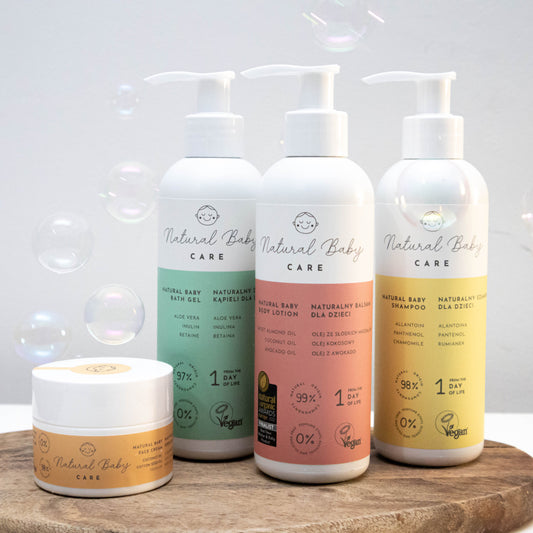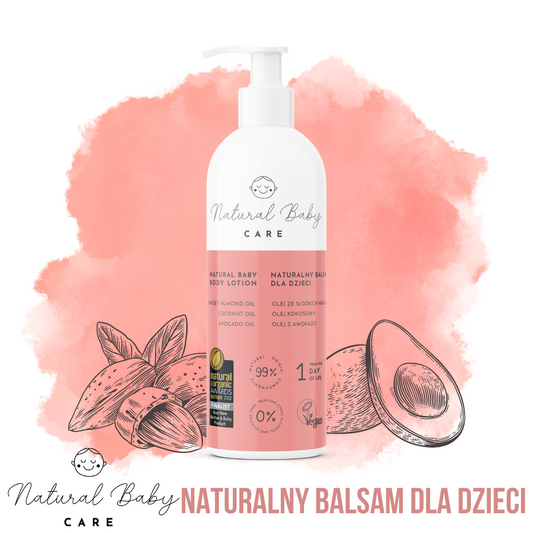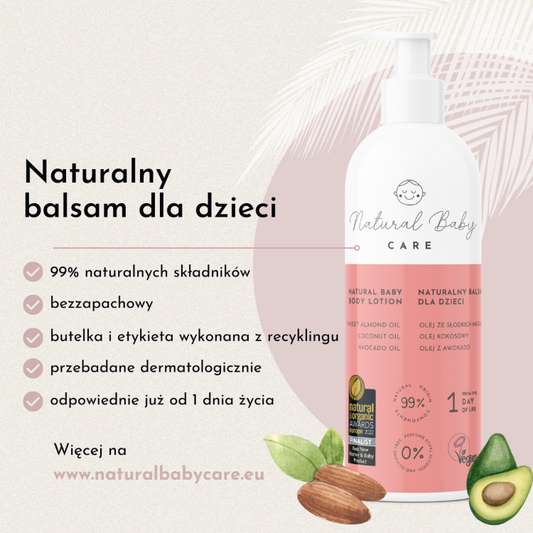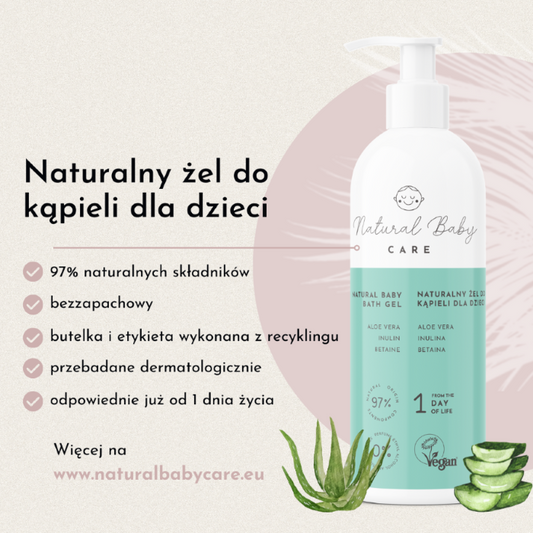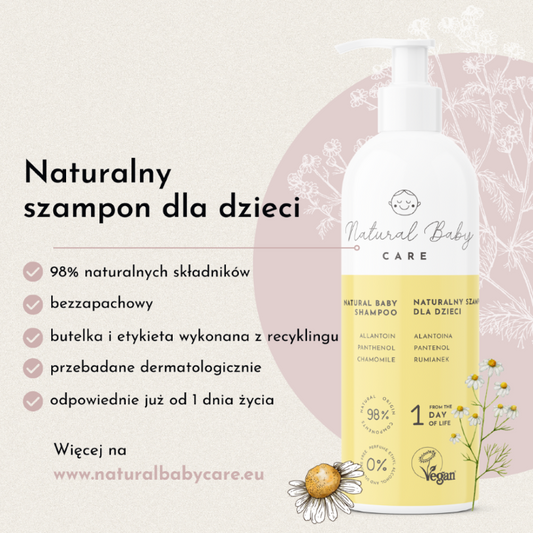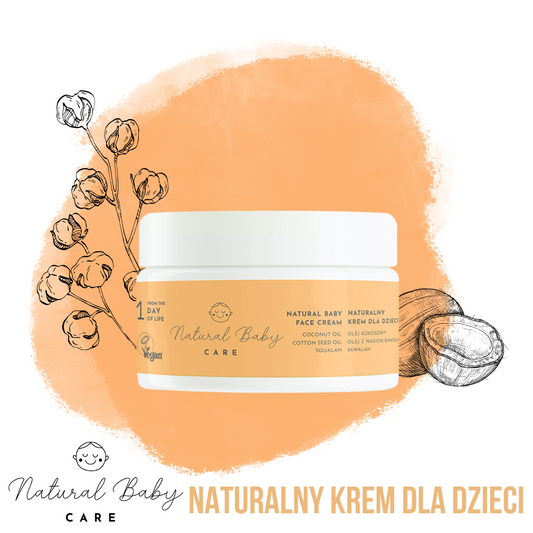Home > Knowledge Zone > Blog > Dry skin in babies in autumn

Dry skin in babies in autumn
Author : Natural Baby Care Team
Publication date: September 23, 2025
Reading time: 5 minutes
In autumn, babies' skin becomes particularly susceptible to dryness. Cooler air outside, heating indoors, and frequent temperature changes can easily damage the delicate protective barrier of the skin. Dry skin in babies is a common problem during this time, with parents noticing roughness, flaking, and irritation. How can you care for your baby's skin naturally to keep it healthy and moisturized?
Check out cosmetics for your baby's delicate skin
Long, hot baths exacerbate skin dryness. In the fall, it's best to limit bath time to a few minutes, use warm (not hot) water, and choose natural cleansers without SLS or artificial fragrances. After bathing, it's best to gently pat your skin dry with a towel (don't rub!) and immediately apply a layer of oil or balm.
Did you know that...?
Collapsible content
Jak często smarować skórę niemowlaka jesienią?
Czy można używać oliwki dla dzieci?
Co robić, gdy sucha skóra zamienia się w czerwone plamy?
Czy jesienią kąpać niemowlę codziennie?
Jakie ubrania najlepiej sprawdzają się przy suchej skórze?


